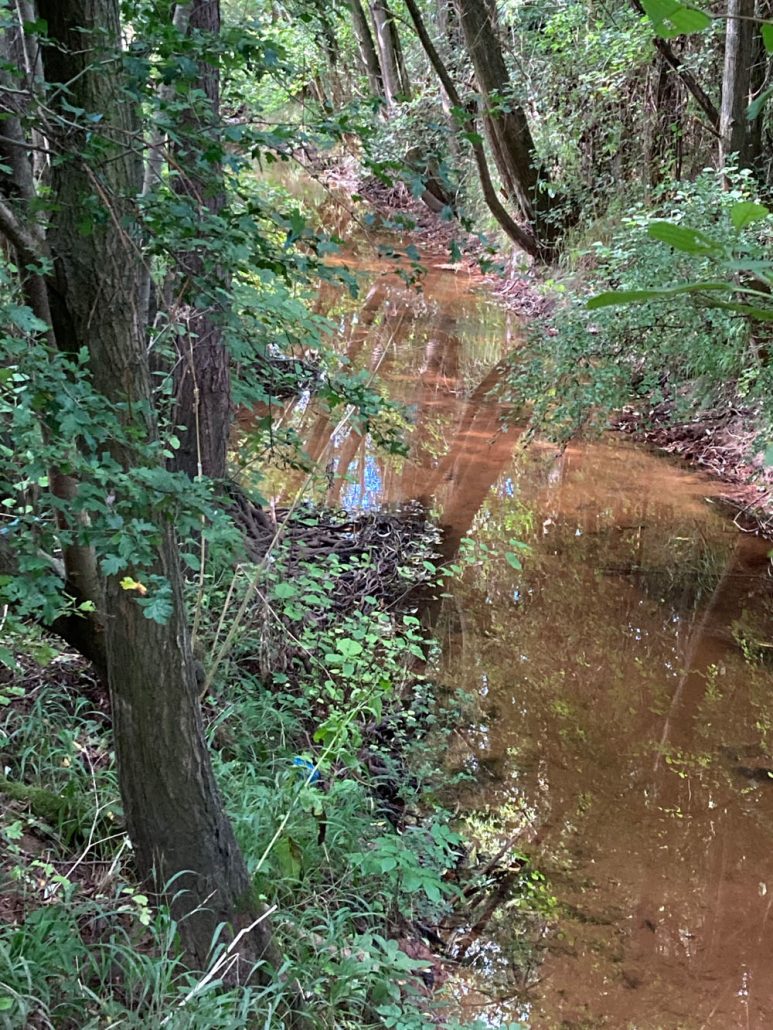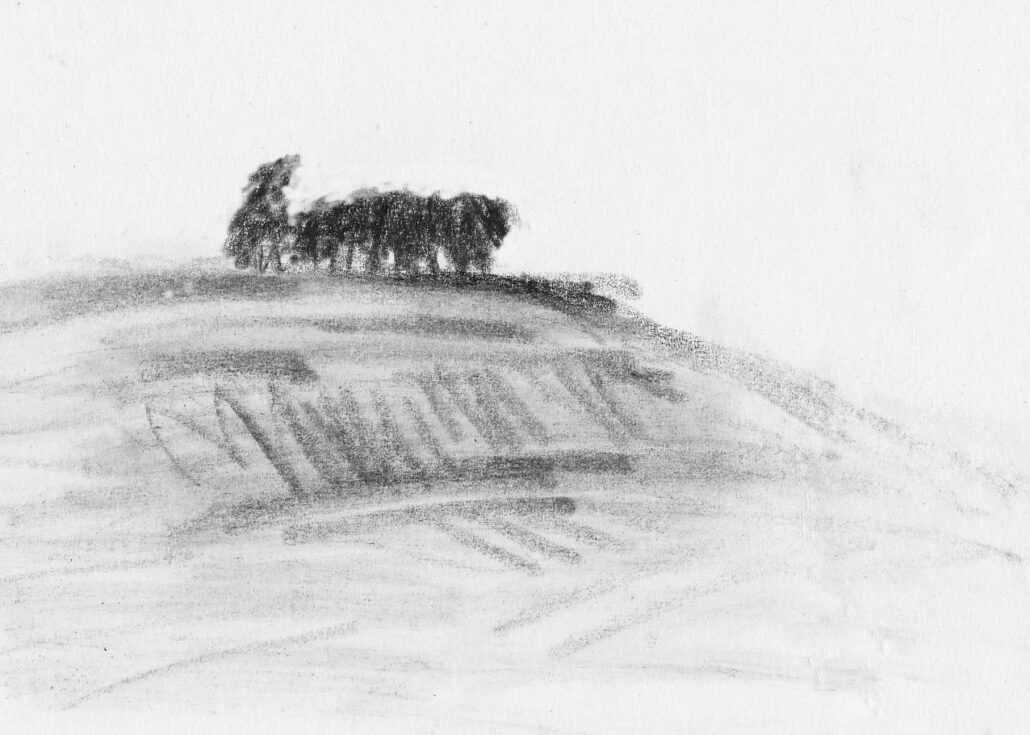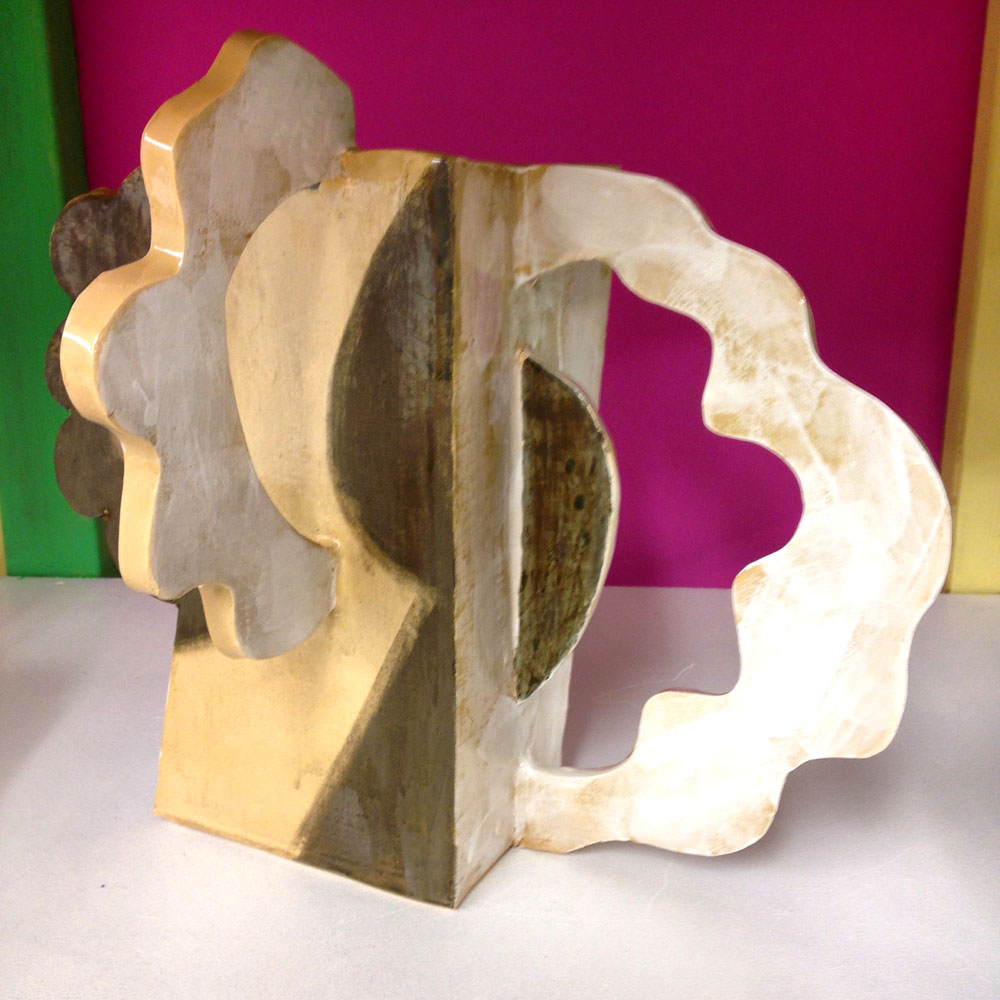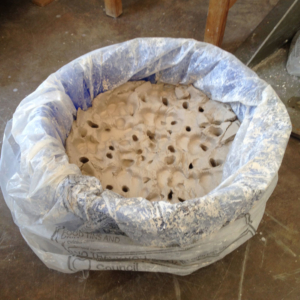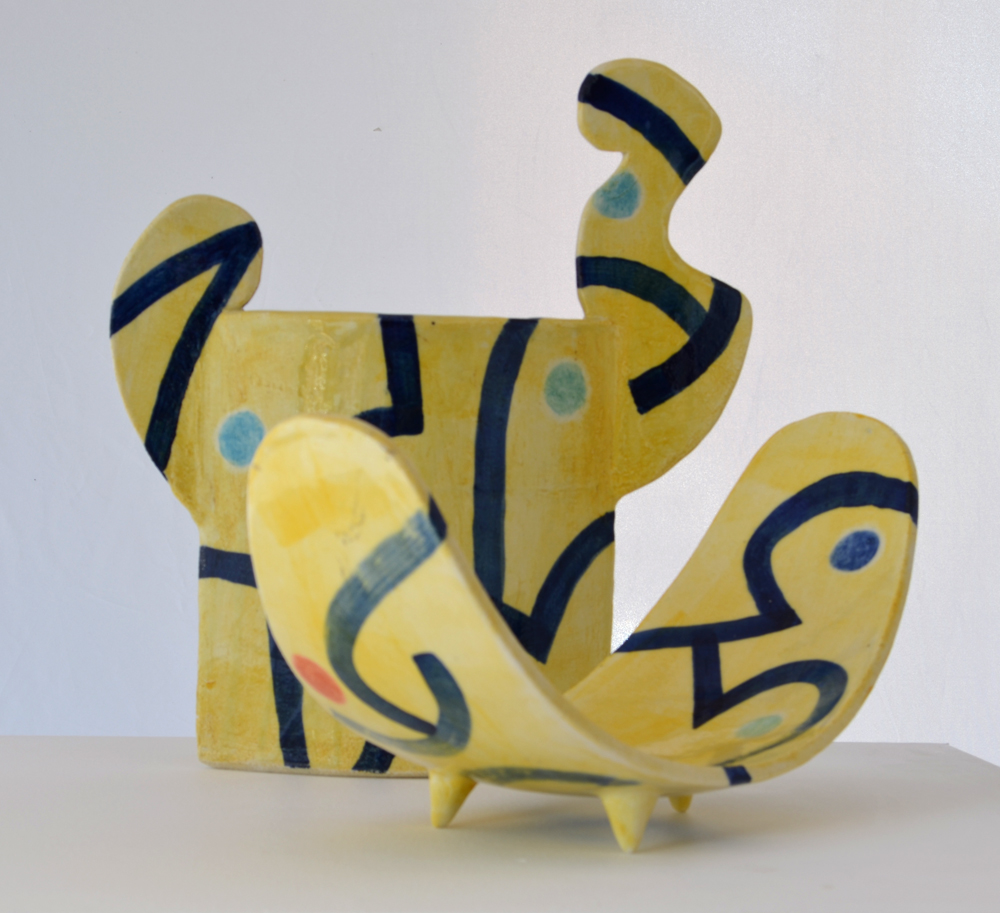December, happy outcomes
Strange things have been happening at the studio lately. Unexplained disappearances of ceramics, unfamiliar sounds coming from the ceiling, doors being left wide open at night and the kiln not firing on all cylinders. I decided to go for a walk up the hill to Frith Wood to blow away the cobwebs.
It was the usual steep climb up to Bradlow Knoll. The view was bathed in a wintry half-light but there was no wind as there had been these last few days with Storms Arwen and Barra which managed to blow a few trees down along the path deep in the wood. Barra (fair-headed) is named by Irish weather forecaster Met Éireann. Arwen is Welsh Celtic for “good”. The next one will be named Corrie, then Dudley, Eunice, Franklin, Gladys, and so on, according to a “name a storm’ project open to the public. What they all have in common is an ability to blow down trees and embarrass the big energy companies.
The only noticeable activity in the woods were the squirrels chasing each other up and down trees. One of their cousins lives in our garden and has been caught eating the fatball left out for the bluetits, but here in the Frith they seem to feed mainly on chestnuts. But I was too concerned with the studio to take in the flora and fauna.
I believe that I was so burdened by these thoughts that I went to bed that night and muttered the magical words that all potters do when they seek help; “hydrous aluminium phyllosilicates.” I fell into a deep sleep but awoke when I felt the presence of someone else in the room. It was, of course, St Spyridon, patron saint of potters, former shepherd and Bishop of Trymithous (c. 270 – 348), responsible for marketing at Peter Arscott Ceramics, who you may remember from a previous blog (passim December 2020).
I knew it was him from the strange shepherd’s woven straw hat and the smell of sheep.
“This better be good”, he said, “you do realize I’m only for emergencies, don’t you?’
I nodded and told him about my worries. He rolled his eyes in a “seen it all before” way and took a cigarette out of a pouch and lit it, inhaling deeply.
“You don’t mind, do you? I really needed one after what I’ve just been through – a game of poker with Freud, Mohamed Ali and Mother Teresa, and they were fleecing me. Lucky you summoned me.”
He blew the smoke up towards the ceiling, and continued:
“All your problems will be sorted by tomorrow. They are of little consequence compared with your pathetic marketing strategy however, which, despite my best advice, I see you have ignored.”
“The blog is still a little text-heavy,” I admitted.
“The more images, the lighter the blog. Vision trumps all senses; the human brain can process entire images in as little as 13 milliseconds.”
Taken aback as ever by the modern approach of this two thousand year-old holy man, I could only shrug and ask:
“So, how are things up in… Heaven, or wherever it you dead go to?”
“Fine, thank you. I’ve joined a club since I last saw you. It’s one for patron saints only, quite exclusive. We meet and swap stories. Why, last time St Blaise was telling us how he became patron saint of those with throat troubles after he cured a child who was choking on a fish bone.”
“Interesting. Anyway, you say the kiln will fire OK tomorrow?”
“Well, you might have to get an electrician for that.”
“Oh, I hoped you’d just snap your fingers and fix it.”
“I’m not a magician, you know, I’m a patron saint.”
“I’m disappointed.”
“I can get St Eligius to recommend one.”
“Who’s he then?”
“St Eligius? He’s the patron saint of electricians.’
“OK. Thank you. By the way, are you coming to the company Christmas party?”
“Er, no, I can’t. I’d be breaking the rules.”
“Covid?”
“No. We can only appear directly to one earthling at a time.’
“Ah,” I said, “but the other two guests will be Thelonious, who is the pottery pugmill, and Ziggy, who is the studio spider in charge of security, so strictly speaking …”
“Sorry, a spider is still an earthling.’
“OK.”
“I must go now. We’re putting on a Christmas panto and there’s a rehearsal. Socrates will be surprisingly good as Aladdin, you know, and James Dean is playing Wishee Washee and John Wayne is Widow Twankey.”
Before I could ask him what part he was playing, he disappeared.
In the morning I had to face the inevitable accusations from my wife of smoking in bed and allowing sheep into the house, but as I entered the studio, I saw that the squirrel was running along its roof, which explained the unfamiliar sounds coming from the ceiling, and when I turned the handle of the door, I saw the latch was stuck, which explained the door always being open.
I went to the shed to get a screwdriver and saw in the shadowy depths along the bottom shelf all the “missing” ceramics that I had stored away and then forgotten during the Covid stockpiling. And when I opened the kiln to see the result of a glaze firing, I saw that everything was back to normal, the clock on my digital radio flashing away telling me that there had been a power cut which had gone unnoticed by me, which is why that previous firing had been a disaster. Good old Spyro – always right, in the end.
One of the vases that came out of the kiln has some cheery colours that chime with the seasonal good wishes. By now in a celebratory mood, and in honour of St Spyro, I decided to do some serious research into a cocktail that might do the same.
To start with you need a bottle of Mastic Tears, a liqueur made from mastiha trees near Olympoi village, one of the mastic villages, on the island of Chios. It was given to me by my niece’s Greek partner, and I accept that not everyone has a bottle in their cellar. A generous slug in a tumbler, a smaller slug of sugar syrup, ice, some soda, a dash of orange bitters, a sprig of thyme and a black olive. I’m calling it a St Spyros. It’s quite interesting. The olive is particularly good at the end.
Peter Arscott Ceramics wish you all a happy Christmas. And If you live in or near Worcester, London, Chichester, Hove, Lymington or Cambridge and you are looking for that original gift, then why not drop in at the galleries whose names caption the ceramic images scattered throughout this blog?
Cheers. Here’s looking forward to 2022, and hoping it surprises us by bringing pleasure, gladness and delight. After all, the number 22 indicates that your angels have your back and are ready to help you in whatever way they can (apparently it is an “Angel Number”).
kalá Christoúgenna

















